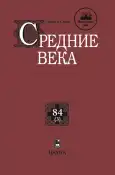To Create a Dynasty. «The Kin of Sverre» And Norwegian Medieval Inheritance Law
- Authors: Agishev S.Y.1
-
Affiliations:
- Lomonosov Moscow State University
- Issue: Vol 84, No 3 (2023)
- Pages: 48-84
- Section: Articles
- URL: https://journals.eco-vector.com/0131-8780/article/view/628715
- DOI: https://doi.org/10.7868/S0131878023030030
- ID: 628715
Cite item
Abstract
The article suggests a hypothesis that in so-called periods of «civil wars» (1130–1240) and «epoch of greatness» or «storhetstiden» (1240–1319) in Norway there was prospective and retrospective dynastic planning as part of the state policy. It provided by order of Sverrir, an impostor, who become the king of Norway, and his successors («the Sverrir clan») this planning and realized by the compilers of sagas and laws who were in their service. The main methods of this planning were manipulation of historical memory reflected in the monuments of historical writing, and also name-giving. By the use of these methods within the dynasty of the Norwegian kings from its legendary founder Harald Fairhair and the «Sverrir clan» as its part were modeled linages as specific mental schemes. They did not reflect real agnatic structures as representations of kinship relations, which had to connect real and imaginary ancestors and descendants. These constructions were intended for legitimizing of the origin and rights to power both Sverrir himself and those representatives of the royal dynasty he descended from as well as his own offspring. Lineages were composed both of those members of the royal family who had the same names, which made the descendants like their ancestors, and on the basis of similar kinship configurations that appeared as a result of marriages between representatives of the royal dynasty and the Norwegian nobility. The need of dynastic planning was closely linked to changes in Norwegian inheritance and family law. The article shows how the situation within the «Sverrir clan» influenced to the formation of succession laws of 1273 and 1302, and the assertion of the principle «Norway is the king’s honor» led to the contamination of their norms with the general inheritance law ones.
Keywords
About the authors
S. Yu Agishev
Lomonosov Moscow State University
Email: agisjev@mail.ru
Moscow, Russian Federation
References
- Агишев С.Ю. Норвежское Средневековье... в Сибири: Грамота короля Хакона V из собрания Научной библиотеки Томского государственного университета. М., 2021
- Агишев С.Ю. О соотношении понятий «одаль» и «собственность» в норвежском законодательстве XI–XIII вв. // Концепт-явление «собственность» в общественной структуре западноевропейского Средневековья / Отв. ред. Н.А. Хачатурян. СПб., 2020. С. 60–85 (Труды исторического факультета МГУ. Вып. 162. Сер. II: Исторические исследования, 101)
- Агишев С.Ю. Теодорик Монах и его «История о древних норвежских королях» / Пер. с лат. яз., общ. ред., коммент. С.Ю. Агишева; науч. ред. пер. Б.А. Макеев. М., 2013. (Исторические источники)
- Гуревич Е.А., Матюшина И.Г. Поэзия скальдов / Отв. ред. Е.М. Мелетинский. М., 2000
- Литвина А.Ф., Успенский Ф.Б. Династический мир домонгольской Руси. СПб., 2020
- Успенский Ф.Б. Имя и власть: выбор имени как инструмент династической борьбы в средневековой Скандинавии. М., 2001 (Studia philologica. Series minor).
- Успенский Ф.Б. Люди, тексты и вещи: Из истории культуры средневековой Скандинавии. М., 2015
- Успенский Ф.Б. «Яростный как лев, кроткий как агнец»: легенда печати и легенда власти в Норвегии XII–XIII вв. // Historia animata. Памяти О.И. Варьяш. М., 2004. Ч. 3. С. 39–54
- Foreigners and Outside Influences in Medieval Norway / Ed. S.S. Hamre. Oxford, 2017.
- Krag C. Myten om Hårfagreættens ‘odel’. Svar til Knut Dørum // [Norsk] Historisk Tidskrift. 2002. Bd. 81. S. 391–394.
- Krag C. Norge som odel i Haralds Hårfagres ætt. Et møte med en gjenganger // [Norsk] Historisk Tidskrift. 1989. Bd. 68. S. 288–302.
- Krag C. Norges historie fram til 1319. Oslo, 2000.
- Krag C. Vikingtid og rikssamling 800‑1130 // Aschehougs Norgeshistorie. Bd. 2. Oslo, 1995.
- Krag C. Ynglingatal og Ynglingasaga: en studie i historiske kilder. Oslo, 1991.
- Morsel J. Le médiéviste, le lignage et l’effet de réel. La construction du Geschlecht par l’archive en haute-allemagne à partir de la fin du Moyen Âge // Revue de synthèse. 2004. 5e série. P. 83–110.
- Storm G. Vore Forfædres Tro paa Sjælevandring og deres Opkaldelsesystem // Arkiv för nordisk Filologi. Lund, 1893. Bd. IX. S. 199–222.
- Turvelle-Petre J. The Genealogist and History: Ari to Snorri // Saga-Book. 1978–1981. Bd. 20. P. 7–23.
Supplementary files








